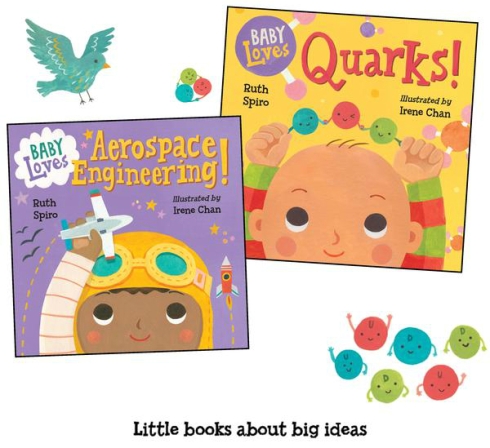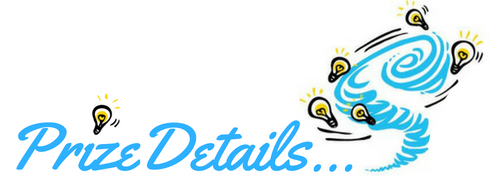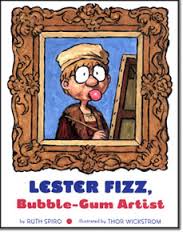You are currently browsing the tag archive for the ‘Lester Fizz: Bubblegum Artist’ tag.
by Ruth Spiro
Two weeks ago, I posted the following question on the Storystorm Facebook group:

I had been brainstorming my own list of ideas to write about, but I think it’s important to do some market research, too. Would my ideas be interesting and helpful to Storystorm readers? I figured that posing this question was a good way of taking their pulse.
Within a day, several members had replied with questions on topics they wanted to read about. Each of these questions also had “Likes,” indicating that others were interested in them, as well. As a result, in addition to my own list I now had nine more possible topics, fresh for the picking.
Looking for inspiration?
Ask for it!
Sometimes we see, hear or read something and BAM, inspiration lands right in our lap. The perfect topic, character or story we can’t wait to explore and write about. Other times, we have to take a more active role in seeking it out. One way I’ve discovered, as I demonstrated above, is to engage with my potential audience and ask them what they want. It’s as simple as that.
Here are a few to try:
Kids (Of course!)
When my daughters were young, it felt like I had idea-machines living in my home providing a never-ending stream of inspiration. If you speak with kids, you can’t help but be amazed by the funny, creative and often surprisingly perceptive things they say. If you’re lucky enough to spend all or part of your day with kids (whether they’re your own or someone else’s!), here’s my advice: Write. Everything. Down.
Librarians
Get to know the youth services librarians at your public library and the media specialists at your local schools. Sign up to volunteer if the opportunity exists. Ask if there are any requested topics they wish they could find more books about.
Booksellers
When is the best time to get to know your local booksellers? If you’re pre-published, that time is NOW. Pay attention to the books they’re hand-selling, attend author events, and support the store by purchasing a book or two when you visit. As with librarians, ask about the books their customers are requesting. Or, would they like to see companion titles for books they currently stock? Develop (an authentic) relationship now, well before it’s time to ask them to stock your book or host a launch event.
This is only the tip of the iceberg, but I think I’ve made my point. Sometimes, the best way to find new ideas is simply to ask for them.
BONUS!
Now, back to my Facebook query. While I posted the call for topics to demonstrate my point, I also know that group members left their questions in earnest and I don’t want this to feel like a bait-and-switch. So, here are those questions with what I hope are brief, but helpful answers.

“Sometimes I think of a cool character, but then have trouble turning it into a premise. Any tricks on sort of taking an idea and expanding on it?” –Kerrie T. & Angie I.
If you love your character, set her free! Story is what happens when something changes. A door opens. She meets someone new. She loses something. Wants something. Gets into trouble. Give your character a new experience or problem to navigate and capture her unique, but inevitable, reaction.
“Tips for self-editing”–Michele S.
Here’s a technique I share in my school visits and writing workshops: Don’t try to do it all at once. Much like the job of cleaning your room, if you focus on one specific task at a time it won’t seem so overwhelming. Some items to consider for your editing checklist: Does your story have a natural arc, with a beginning, middle and end? Does your main character also have an arc, growing or changing in some way? Is your language as fun, rhythmic and specific as it can be? If you’ve written a picture book, have you provided varied illustration opportunities? Once you’ve taken your story as far as you can on your own, it’s time for a critique group or writing partner to have a look with fresh eyes.
“I feel like many of my great ideas are more of a short story and less of a picture book – can you help writers identify some differences?” –Melanie K. & Nadine P.
There are a few main differences, but I think the best test is to imagine your story with page turns. Do the scenes change? Is there movement? Are there a variety of scenes to illustrate? If so, you probably have a picture book. On the other hand, if your story is longer and contains more description within the text (that would otherwise be illustrated in a picture book) it may be a better fit as a magazine story. There are other differences between the two, but I think the “page turn test” is an excellent indicator.
“Any thoughts to share on endings?”–Jennifer V.
Rob Sanders gives an overview on his blog that’s head and shoulders above anything I could come up with on my own. He describes different kids of endings and gives a few examples of each here.
“Self pub or traditional?”–Matt R.
Matt, I’m just not the right person to answer this for you because I’ve only worked with traditional publishers. I’ve been pleased with this process and have never considered self-publishing. However, I know there are many authors who feel the same way about self-publishing, so I encourage you to fully research both sides.

“How did you get the ideas for your Baby Loves books? (I love them!)–Claire N.
Lovely of you to ask, Claire! Some may recall an article that appeared in the New York Times back in 2010. Picture Books No Longer a Staple for Children was a controversial article about parents who were bypassing picture books for their very young children in favor of more sophisticated reading material, such as chapter books. While discussing this with some writer friends I commented, “What do these parents want, quantum physics for babies?” As soon as I said it, I knew I had an idea with potential.
“Suggestions for judging which ideas have most merit.”–Marty B.
An idea on it’s own is just that – an idea. It’s what you do with it that determines its merit. I’m not sure you can adequately judge an idea until you develop it into something and see where it goes. If I had thought too long about the idea of writing science books for babies, I probably would have eventually talked myself out of it! But once I started playing around with the idea, researching and writing and revising, I realized it did have merit and was worth pursuing. I’m glad I did!
 Ruth Spiro is the author of Baby Loves Aerospace Engineering and Baby Loves Quarks, published by Charlesbridge. Baby Loves Thermodynamics and Baby Loves Quantum Physics are forthcoming this fall. These adorably illustrated books contain expert-reviewed science, yet are simple enough for little ones! Ruth is also pleased to share that another new picture book series, Made by Maxine, will be published by Dial beginning in 2018. Inspired by her trusty companion and muse, a pet goldfish, Maxine is determined to make the world a better place, one crazy contraption at a time. Visit her online at ruthspiro.com and Twitter @RuthSpiro. (Ruth wrote this blog while recovering from pneumonia, and apologizes for the grammar and punctuation mistakes she’s sure she missed!)
Ruth Spiro is the author of Baby Loves Aerospace Engineering and Baby Loves Quarks, published by Charlesbridge. Baby Loves Thermodynamics and Baby Loves Quantum Physics are forthcoming this fall. These adorably illustrated books contain expert-reviewed science, yet are simple enough for little ones! Ruth is also pleased to share that another new picture book series, Made by Maxine, will be published by Dial beginning in 2018. Inspired by her trusty companion and muse, a pet goldfish, Maxine is determined to make the world a better place, one crazy contraption at a time. Visit her online at ruthspiro.com and Twitter @RuthSpiro. (Ruth wrote this blog while recovering from pneumonia, and apologizes for the grammar and punctuation mistakes she’s sure she missed!)

Ruth is giving away two BABY LOVES SCIENCE books.
Leave ONE COMMENT below to enter. You are eligible to win if you are a registered Storystorm participant and you have commented once on this blog post. Prizes will be given away at the conclusion of the event.
Good luck!
by Ruth Spiro
I’ve spent the past few weeks in a flurry of activity, celebrating the release of my new science-themed board books, illustrated by Irene Chan. BABY LOVES AEROSPACE ENGINEERING! and BABY LOVES QUARKS! are the first two titles in the Baby Loves Science series, published by Charlesbridge. Next year they’ll be joined by two siblings, BABY LOVES THERMODYNAMICS! and BABY LOVES QUANTUM PHYSICS!

 When my first picture book, LESTER FIZZ, BUBBLE GUM ARTIST, was published in 2008, my marketing plan included the tried-and-true signings, mailings and school visits. But back then, we authors had to promote our books the old-fashioned way: Barefoot, walking uphill, in the snow.
When my first picture book, LESTER FIZZ, BUBBLE GUM ARTIST, was published in 2008, my marketing plan included the tried-and-true signings, mailings and school visits. But back then, we authors had to promote our books the old-fashioned way: Barefoot, walking uphill, in the snow.
At least that’s how it seems, looking at it in the rearview mirror.
Take a minute to consider how you’d get the word out about your new book and connect with potential readers without social media.
For me, this second time around is a whole new world.

LESTER FIZZ came out in August of 2008, and I scheduled most of my launch events for September. I ordered postcards with the book cover on one side and details like the ISBN and a few blurbs on the other. I used the postcards as event invitations by printing labels with the date, time and location, affixing them to the postcards and then addressing them by hand. This required more work, but it allowed me to order a larger quantity of generic postcards I could use for multiple purposes, such as leave-behinds at conferences.
At the last minute, I decided to spring for the 5 x 7 size, which I thought would have greater visibility. Unfortunately, when I sent my first mailing I neglected to consider two important details. First, I used regular postcard stamps, not realizing the larger size required extra postage. This problem was compounded by the fact that when I designed the postcards, it hadn’t occurred to me to include a return address.
 I’m not sure where those postcards ended up, but it wasn’t in my friends’ and family’s mailboxes. Ordering a larger quantity turned out to be my only smart move, because once I learned that 90% of the postcards were never delivered, I had to re-do the entire mailing. (The others arrived at their destinations postage due!)
I’m not sure where those postcards ended up, but it wasn’t in my friends’ and family’s mailboxes. Ordering a larger quantity turned out to be my only smart move, because once I learned that 90% of the postcards were never delivered, I had to re-do the entire mailing. (The others arrived at their destinations postage due!)
Later that month when my schedule slowed down, I joined Facebook. Not many people I knew were using it, as it wasn’t yet a “thing” among people my age. Still, I’d been hearing about it more and more so I decided to check it out. I had fun connecting with high school friends and former colleagues, and began posting status updates. I still had two more book signings coming up in October, so I posted the details.
Surprisingly, people I hadn’t seen in years showed up, some with friends, babies, nieces and nephews in tow. Truth be told, these folks weren’t on my invitation list and would never have known about the events if I hadn’t shared them on Facebook.
Eight years later, Facebook has become an invaluable resource. It enables authors and illustrators to leverage our social networks by publicizing events, sharing links to blog posts and reviews, and connecting with fans and potential readers. Best of all, rather than blowing my promotion budget on invitations and stamps, I purchased important stuff like rocket ship cookies, airplane tattoos and astronaut ice cream!

I recall exactly how I met Tara-–on Twitter!
I had a Google Alert set for my book title (another helpful resource) and discovered her tweet:

We began following each other, I found Tara’s blog, and made a friend with similar interests halfway across the country. (Tara’s note: I love quirky LESTER FIZZ.)
In 2008 I knew very few people who were active on Twitter. The old joke was that people used it to announce what they’d eaten for breakfast. Back then, I think Twitter was still figuring out what it wanted to be when it grew up.
Ah, but Twitter is home of the hashtag.
For those still unfamiliar, and I personally know more than a few, I’ll briefly explain. Adding a “#” to the beginning of a word or phrase makes it visible to all of the 313 million active users around the world who are searching for that word or phrase. #Authors, #illustrators, #booksellers, #librarians, #bloggers, #editors, #agents and others in the #kidlit and #SCBWI community, including those interested in #picturebooks, #graphicnovels, #reading, and #literacy use hashtags to connect and see what others are discussing. Get the picture?
(People use hashtags on Facebook and Instagram too, but it all began on Twitter.)
You can share ideas and #chat with like-minded people around the world without leaving your own comfy couch. Through the years, I’ve used Twitter to “meet” hundreds of educators, librarians and booksellers. I’ve received invitations to speak at conferences, set up Skype visits with classrooms in India, Turkey and Mexico, and kept abreast of topics trending in children’s literature. When used the right way, the power of Twitter is stunning.
So, while I may have missed the boat with #bubblegum, now I can easily find people who are interested in #boardbooks, #STEM, #quarks and #aerospace. See? It’s addictive!
But wait, there’s more…

Booksellers, librarians and parents often post photos of new or favorite books, and some popular Instagram accounts have tens of thousands of followers (or more!) How cute is this photo of a little reader?


One word: Educators! If you have Educator Guides, crafts or activities to go along with your books, create a Pinterest board and pin them there. I pinned mine for Lester Fizz five years after it was published, and they’re still being “favorited” and “repinned.”
Baby Steps
In my opinion, Facebook and Twitter are the two heavy hitters. They’ve given me the biggest return on my investment of time and effort without costing a penny. But as I made a list of all the tools that didn’t exist (or weren’t as popular) only six or eight years ago, I realized just how far we’ve come. There are some resources I haven’t mentioned (LinkedIn, SnapChat, Tumblr) simply because I haven’t found them quite as useful as the others.
Keep in mind that while these social media platforms can be used for promotion, they’re also spaces for creating community. I’ve found that the most rewarding experiences come from authentic interactions, resulting in relationships that grow over time. The best part is that once you’re an active member of a community, you don’t have to promote yourself as much because others will help do it for you. Of course, this works both ways. It’s a joy to celebrate contracts and “book birthdays” of those in your community, especially when you’ve followed each other through all the ups and downs of the journey.
Thank you, Ruth, for showing us how book marketing has changed dramatically in just a few years. I personally do not know what I would do without social media because, as you know, I like to stay home in my jammies.
Ruth is giving away a signed, two-book set of BABY LOVES SCIENCE to a random commenter. How do you use all the tools we have today to spread the word about your work?
A winner will be selected soon. (I have stopped saying a particular date because I never get to it in time. Yes, I have lots of things I have to pick winners for…I PROMISE SOON.)
 Ruth Spiro is a children’s book author and freelance writer. Her Baby Loves Science board book series, published by Charlesbridge, includes Baby Loves Aerospace Engineering! and Baby Loves Quarks!. The next two titles, Baby Loves Thermodynamics! and Baby Loves Quantum Physics! will be published in 2017. Also forthcoming from Dial is a new picture book series, Made by Maxine, which sold at auction in a 3-book deal. The first book is scheduled for 2018.
Ruth Spiro is a children’s book author and freelance writer. Her Baby Loves Science board book series, published by Charlesbridge, includes Baby Loves Aerospace Engineering! and Baby Loves Quarks!. The next two titles, Baby Loves Thermodynamics! and Baby Loves Quantum Physics! will be published in 2017. Also forthcoming from Dial is a new picture book series, Made by Maxine, which sold at auction in a 3-book deal. The first book is scheduled for 2018.
Ruth’s debut picture book, Lester Fizz, Bubble-Gum Artist won awards from Writer’s Digest and Willamette Writers, and was a Bank Street College of Education Best Book of the Year. Her articles and stories have appeared in FamilyFun, CHILD, and The Writer, and also in popular anthologies, notably The Right Words at the Right Time (Vol. II), edited by Marlo Thomas, and several Chicken Soup for the Soul titles. She lives in suburban Chicago.
Website: RuthSpiro.com
Twitter: @ruthspiro
Instagram: @ruthspiro
Facebook: facebook.com/RuthSpiro.Author/
 by Ruth Spiro
by Ruth Spiro
In 2003, I sold my first picture book manuscript, Lester Fizz, Bubble Gum Artist, as the result of a contact made at the SCBWI Annual Conference. In the five years between the sale and my book’s release in 2008, I had plenty of time to think about innovative ways to promote it. Yes, my marketing plan included the tried-and-true mailings, signings and presentations, but I also wanted to do something a little different. That’s just me.
With a moderate investment of time and money, in 2006 I created my own holiday, “Bubble Gum Day.” Unsure of my publication date at the time, I chose the first Friday in February because aside from Groundhog Day, there’s little else going on. This year, Bubble Gum Day falls on Friday, February 4.
 The premise is simple: On Bubble Gum Day, kids pay fifty cents to chew gum at school, with the proceeds used for any project or charity the school chooses. Kids have fun, schools benefit, and my name and book title get valuable publicity.
The premise is simple: On Bubble Gum Day, kids pay fifty cents to chew gum at school, with the proceeds used for any project or charity the school chooses. Kids have fun, schools benefit, and my name and book title get valuable publicity.
Six years later, it’s become a fun and effective promotional tool that has increased my visibility as an author and “Bubble Gum Expert.” It has also gained me exposure in both print and broadcast media, including The Washington Post Express, The New York Daily News online and Good Day Sacramento, as well as on radio stations in both large and small markets. This holiday with kid-appeal has been celebrated in countless schools, public libraries, children’s museums and community organizations.
Most importantly, schools and community groups have used Bubble Gum Day to do some wonderful things. One school raised enough money to buy a goat for a village in Africa through Heifer International. Another used their proceeds to purchase snacks, which they sent to soldiers in Iraq. Yet another school collected used books instead of money, and wound up with over one thousand books, which they donated to local women’s shelters.
Frankly, when emails with these stories began appearing in my mailbox, I stopped thinking about the holiday as a promotional tool—it’s become so much bigger than that.
 This year, I’ll spend Bubble Gum Day with a group of second and third graders in Oak Brook, IL. The money they collect will go to Reading is Fundamental. They don’t know this, but I plan to chew lots of bubble gum too, for which I’ll also make the required donation!
This year, I’ll spend Bubble Gum Day with a group of second and third graders in Oak Brook, IL. The money they collect will go to Reading is Fundamental. They don’t know this, but I plan to chew lots of bubble gum too, for which I’ll also make the required donation!
Then, as in past years, I’ll eagerly anticipate the emails, photos and packages of letters I’ll receive over the coming weeks, as schools tally up their proceeds and continue to make Bubble Gum Day a sweet success!
Win a signed copy of Lester Fizz and a bubble gum prize pack! Send a photo of your most creative bubble gum bubble—in a group (like your class), individually, or like one of Lester’s unique bubbles. Email photos to bubblegumday@gmail.com with the sujbect line “Tara Lazar contest” by February 7th. Ruth will select a winner and some bubble photos will be featured here. Good luck!
Ruth Spiro is the author of Lester Fizz, Bubble-Gum Artist, published by Dutton. Her essays and articles have appeared in FamilyFun, The Writer and Woman’s World, as well as The Right Words at the Right Time: Your Turn, edited by Marlo Thomas, and several Chicken Soup for the Soul titles. She frequently speaks at schools and conferences. Visit her online at www.ruthspiro.com. Learn more about Bubble Gum Day at www.bubblegumday.com.

 What do a macramé owl, Celia Chompers, and a town called Fate have in common? Nothing, really, except that they’re all written in my little green notebook.
What do a macramé owl, Celia Chompers, and a town called Fate have in common? Nothing, really, except that they’re all written in my little green notebook. Every writer should have a notebook. Not one of those fancy, leather-bound ones. You know, the kind that’s so nice, you hate to mess it up by writing in it? No, I recommend the little spiral ones that usually sell for 39¢. And, they’re easy to find in your purse, because the end of the spiral wire is always sticking out, just waiting to jab you. Perfect.
Every writer should have a notebook. Not one of those fancy, leather-bound ones. You know, the kind that’s so nice, you hate to mess it up by writing in it? No, I recommend the little spiral ones that usually sell for 39¢. And, they’re easy to find in your purse, because the end of the spiral wire is always sticking out, just waiting to jab you. Perfect.












